Free TESOL Quarterly Article:
"Reading Comprehension in Test Preparation Classes: An Analysis of Teachers' Pedagogical Content Knowledge in TESOL"
June 2015: Volume 49, Issue 2
This article first appeared in TESOL Quarterly, Volume 49, Number 2, pgs. 369–392. Subscribers can access issues here. Only TESOL members may subscribe. To become a member of TESOL, please click here, and to purchase articles, please visit Wiley-Blackwell. © TESOL International Association.
|
Abstract
This article examines the pedagogical content knowledge which underpins the practices in reading lessons of experienced teachers in test preparation classes. It takes as a starting point the assumption that practice is shaped by teacher cognitions, which are established through professional training and classroom experience. Thus, the study explores the nature of reading comprehension pedagogy and also the ways teachers vary and adapt their approach. The study, carried out in upper intermediate TESOL classrooms in Greece, draws on videorecorded classroom data, field notes, and interviews with four teachers. The analysis focuses on lesson structures, reading and test-taking strategy awareness raising, and teachers’ knowledge about texts. It validates the established reading skills lesson structure—pre-, while-, and postreading—but shows how this can vary in implementation. It suggests that the attention to strategies is not only explicit strategy instruction, but also situated demonstration by the teacher of how strategies can unlock the meaning of the text. The pedagogy overall is conditioned by the test preparation context of the program; the teachers are mindful of this goal and integrate references to the test to anchor the pedagogy in students’ current reality and to demonstrate how specific strategies can aid comprehension. |
Second language (L2) reading comprehension has long been a core element of language teaching and assessment. Texts and questions are a staple of both teaching materials and language proficiency tests, and the methods teachers can use are found in methodology textbooks and teaching manuals. A small number of teacher cognition studies in L2 reading address some of these methods (Cabaroglou & Yurdaisik, 2008; El-Okda, 2005; H. Li & Wilhelm, 2008; Macalister, 2010). However, only one study—by Meijer, Verloop, and Beijaard (1999)—has adopted the concept of pedagogical content knowledge (PCK) to interpret teachers’ practices in reading lessons. This article reports on a study which examined the practices of experienced teachers of reading in lessons where the focus was on reading comprehension test preparation. The research focuses on the PCK of teachers—knowledge about reading instruction (KARI), including reading strategies, and knowledge about texts (KAT)—as evidenced through their practices in actual lessons and explored in interviews following the observed lessons. We follow and develop further the research strategy used by Borg (2003) to understand how teachers teach grammar and by Breen, Hird, Milton, Oliver, and Thwaite (2001) to uncover the principles which shaped teachers’ decision making and practices in lessons. The analysis in this article draws on classroom observation data, supported by teacher interviews and field notes.
Review of the Literature
Language Teacher Cognition
Teacher cognition as defined by Borg (2003, p. 81) is what “teachers think, know and believe and the relationship of these mental constructs to what teachers do in the language classroom.” Language teacher cognition researchers refer to the significance of its origins in general education (Andrews, 2007; Borg, 2006; Freeman, 2002; Woods, 1996) where it has contributed greatly to the understanding of the complex nature of teaching and how this understanding may enhance the effectiveness of teacher education. An established reference is the work of Shulman (1986a, 1986b, 1987), who developed the concept of pedagogical content knowledge (PCK) in a series of articles. Shulman’s studies emphasised the need for researchers to investigate teachers’ understanding of subject-matter content and pedagogy. The relationship between content and pedagogy was seen to be central in identifying the knowledge base of teachers applied to a variety of teaching and learning contexts. This required teachers’ understanding of the subject, learners, curriculum, context, and pedagogy. These components of knowledge played an important role in the interpretation of teachers’ practices in the present study.
Andrews’s (2007) modified model of PCK applicable to L2 teaching helped to further refine our interpretations of classroom practices. His model depicts PCK as “the overarching knowledge base” with teacher language awareness (TLA) as “one subset of the teacher’s knowledge bases (a knowledge base subset that is unique to the L2 teacher)” (p. 30). His model was developed in studies which investigated teachers’ knowledge about grammar (KAG) related to the teaching of grammar (see, e.g., studies cited in Andrews, 2007). In this study we consider KAT an appropriate construct for understanding teachers’ knowledge base of reading comprehension, for example, knowledge of text structure and how this informs pedagogy. This study is therefore influenced by both the original concept of PCK and its development by Andrews for the L2 classroom.
The Nature of L2 Reading
Research in L2 reading suggests that the most successful readers are those who use an interactive approach, combining both top-down and bottom-up skills while reading a text (Macaro, 2003). Bottom-up skills are those with which the reader focuses on the word level, whereas top-down skills draw on the reader’s ability to sample the text and make hypotheses about what is coming next (Grabe & Stoller, 2002). A combination of skills such as skimming, scanning, and guessing words from context enables the reader to identify the main idea of a text and figure out meaning at the sentence level. Macaro (2003) suggests that the role of top-down hypotheses may be less significant than the use of information that readers make at the word level. Paran (1996) also emphasizes the importance of effective bottom-up processing for word recognition that leads to automaticity in reading. However, recent views on the nature of L2 reading (Grabe & Stoller, 2002; Hedgcock & Ferris, 2009; Hudson, 2007), while acknowledging that top-down and bottom-up models may lead to a greater understanding of processes in L2 reading, emphasise that there are limitations in using a strong form of either approach.
This article first appeared in TESOL Quarterly, 49, 369–392. For permission to use text from this article, please go to Wiley-Blackwell and click on "Request Permissions" under "Article Tools."
doi: 10.1002/tesq.189
TC Monthly Giveaway Congratulations to Tiffany Ellis of Indiana, USA, for being the winner of the July 2015 TESOL Connections Monthly Giveaway. Tiffany has won a free adult learners book set.
This month, TESOL is giving away a free
subscription to TESOL Quarterly!
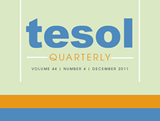
TESOL Quarterly, a refereed professional journal, fosters inquiry into English language teaching and learning by providing a forum for TESOL professionals to share their research findings and explore ideas and relationships in the field. The Quarterly's readership includes ESOL teacher educators, teacher learners, researchers, applied linguists, and ESOL teachers.
Click here to enter
Drawing closes 26 August 2015, 11:59 pm EST
TESOL Blogs Interested in writing a blog for TESOL?
Contact Tomiko Breland with your idea or for submission details.
Check out the latest TESOL Blogs:
|
Connectivity With Google’s Cultural Institute, by Kristen Lindahl
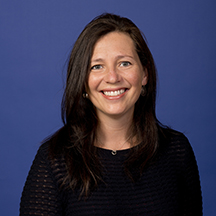 One of the greatest benefits of being online is the global connectivity it brings—connection to other people, other places, other perspectives, and, of course, other languages. Language teachers have been long aware of the connection between language learning and cultural ties, and are often very creative in bringing culture into the classroom and creating experiences for students outside of it, as well. One of the greatest benefits of being online is the global connectivity it brings—connection to other people, other places, other perspectives, and, of course, other languages. Language teachers have been long aware of the connection between language learning and cultural ties, and are often very creative in bringing culture into the classroom and creating experiences for students outside of it, as well.
A current tool that TESOL educators might find intriguing for these purposes is Google Cultural Institute, which has brought Google’s unique technology to the world’s art galleries and museums. Read More. |
|
Discussing Same-Sex Marriage in ELT: A Survey Approach, by Alexandra Lowe
 One of my goals as an instructor in an intensive English program (IEP) has been to encourage my students to pay more attention to the news in the United States. (See “Producing Newscasts for the ESL Classroom“) When students watch the news in English, they strengthen their listening skills, expand their vocabulary, and increase their awareness of American culture. One of my goals as an instructor in an intensive English program (IEP) has been to encourage my students to pay more attention to the news in the United States. (See “Producing Newscasts for the ESL Classroom“) When students watch the news in English, they strengthen their listening skills, expand their vocabulary, and increase their awareness of American culture.
The U.S. Supreme Court’s 26 June 2015 ruling on same-sex marriage was one of several “hot topics” in the news this summer that we tackled in class. Beforehand, I wrestled with the question of how best to approach this issue in a class where I knew that a number of students, because of their religious beliefs, might disagree with the Supreme Court’s decision. Read More. |
|
Controversy in Adult Conversation, by Robert Sheppard
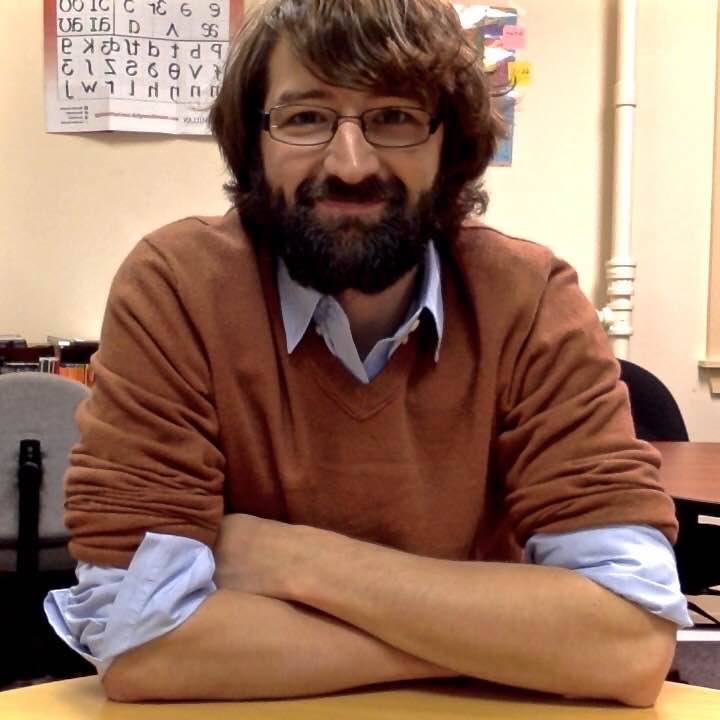 A lot of teachers I’ve spoken with completely avoid contentious topics in their classroom. Of course, the intentions are good: to create an inclusive, congenial atmosphere. And in a world where the language of trigger warnings and safe spaces is spreading rapidly across our higher ed campuses, teachers may feel even more reluctance to introduce any sort of controversy into their classroom. A lot of teachers I’ve spoken with completely avoid contentious topics in their classroom. Of course, the intentions are good: to create an inclusive, congenial atmosphere. And in a world where the language of trigger warnings and safe spaces is spreading rapidly across our higher ed campuses, teachers may feel even more reluctance to introduce any sort of controversy into their classroom.
But at what cost do we excise all disagreement? And does disagreement have to threaten the safe space of the classroom? Read More. |
|
House Wheat This Hound!: The Problem of Listening, by Karen Taylor de Caballero
 If you’re baffled by the title, don’t fret: “House Wheat This Hound!” means nothing in its printed form. When said out loud, however, a listener can find meaning: How sweet the sound! If you’re baffled by the title, don’t fret: “House Wheat This Hound!” means nothing in its printed form. When said out loud, however, a listener can find meaning: How sweet the sound!
Here’s what’s interesting: the listener must be a different person, someone who is not looking at the text. Perhaps that’s why we find “mad gabs” like this one so compelling: Even when we know what we’re supposed to hear, our eyes continue to interfere with our ears, and we are fascinated. Read More. |
TESOL Bookstore

Featured Resources from TESOL Press
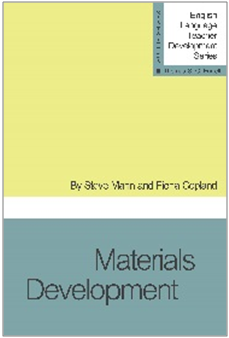 Materials Development Materials Development
Steve Mann and Fiona Copland
Materials play a significant part in lessons, so it is important that these materials fit for purpose. Mann and Copland have elicited and included comments and suggestions from several teachers, teacher educators, and coursebook experts to illustrate their discussions and to bring the practitioner voice into play.
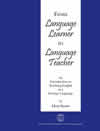 From Language Learner to Language Teacher From Language Learner to Language Teacher
Don Snow, Editor
This volume focuses on the challenges faced by English teachers for whom English is a second (or even third or fourth) language. Four themes receive special emphasis: communicative language teaching, proficiency, language learning, and practicality.
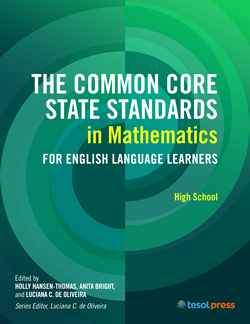 The Common Core State Standards in Mathematics for English Language Learners, High School The Common Core State Standards in Mathematics for English Language Learners, High School
Anita Bright, Holly Hansen-Thomas, Luciana de Oliveira
Copublished with the National Council of Teachers of Mathematics (NCTM), this text explores how high school math content can be made accessible to ELLs. Each chapter provides specific lessons and instructional plans that will not only support students in learning the mathematical content, but also the associated English structures that accompany the content.
|
 |
|
|
 |
| Certified TEFL/TESOL Teachers (Full Time, Long Term), Nanjing Russell Education, Jiangsu province, Nanjing, China
Principal, The Carlos Rosario International Public Charter School, Washington, DC, USA
ESL Faculty Positions, University of Delaware English Language Institute, Newark, Delaware, USA
Online English Coach, 100e.com, Worldwide
ESL Lecturer, Northeastern University, Boston, Massachusetts, USA
Want to post your open positions to Job Link? Click here.
To browse all of TESOL's job postings, check out the TESOL Career Center. |
 |
|
 |
| ADVERTISEMENT |
 |
 |
 |
|
|
 |
| TESOL charter member Edward Mason Anthony Jr. passed away 12 July 2015 at the age of 92. Read the full obituary. |
 |
|
 |
 |
 |
 |
| Hot Topics: The TESOL Blog |
|
 |
|
|
|
 |
|